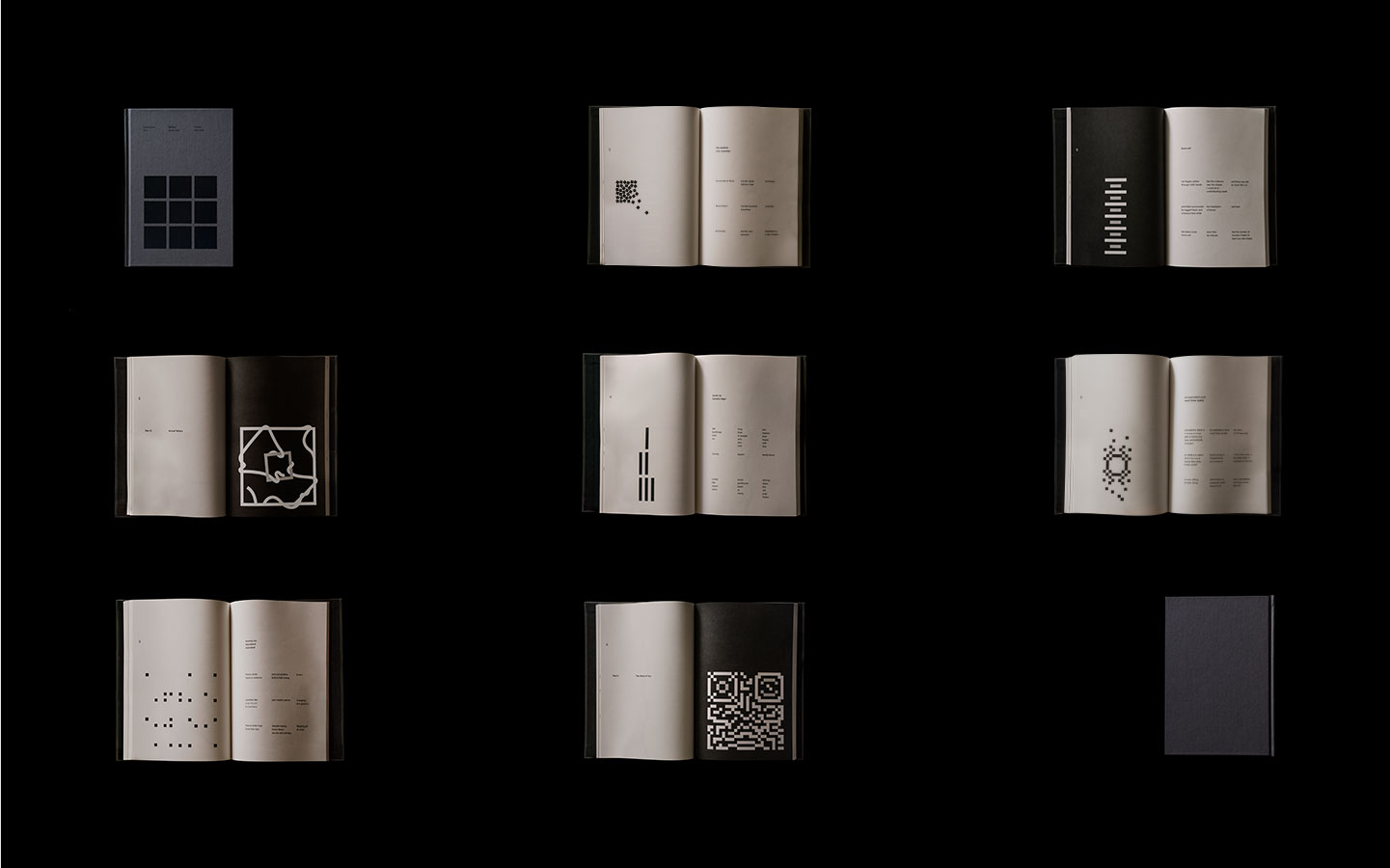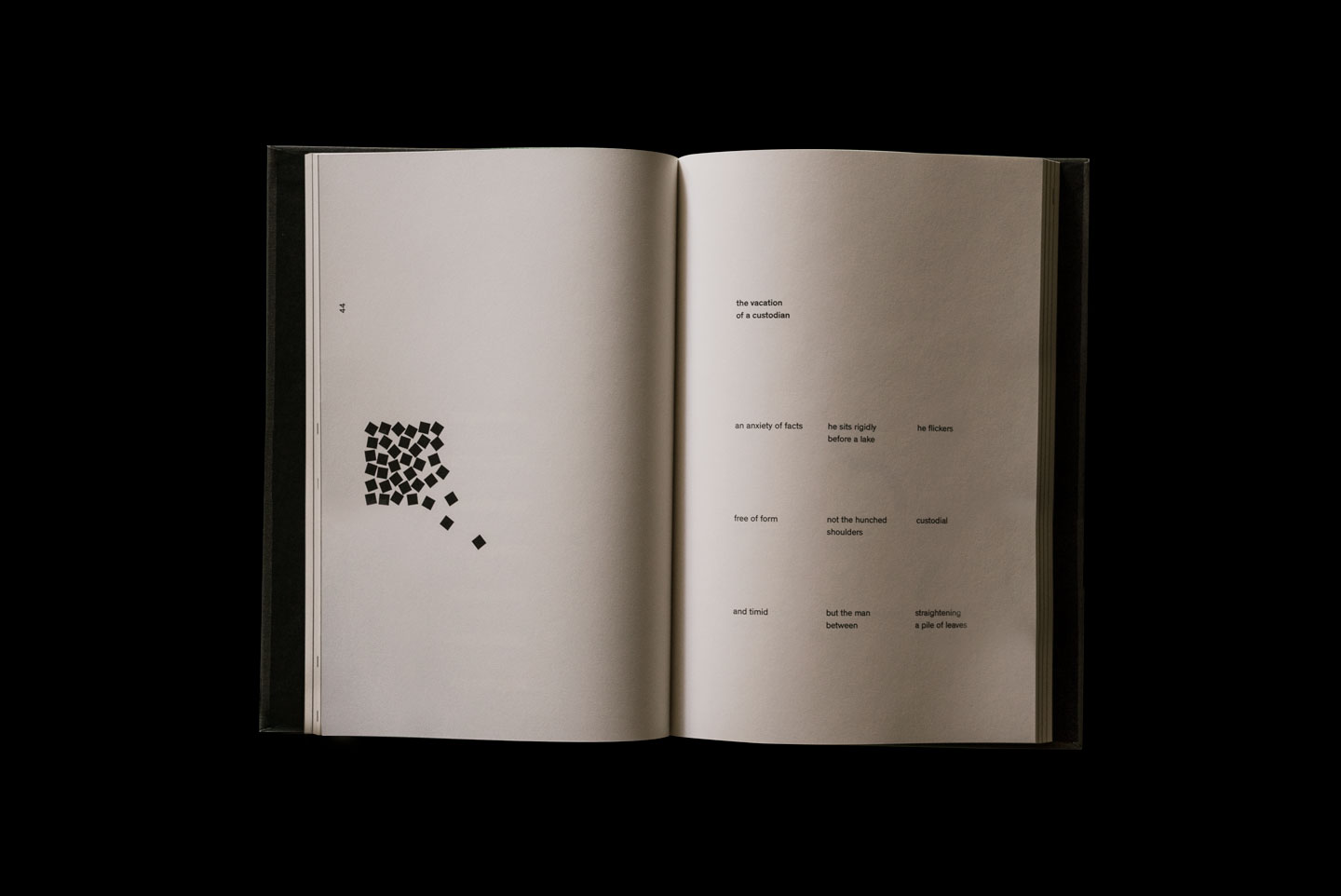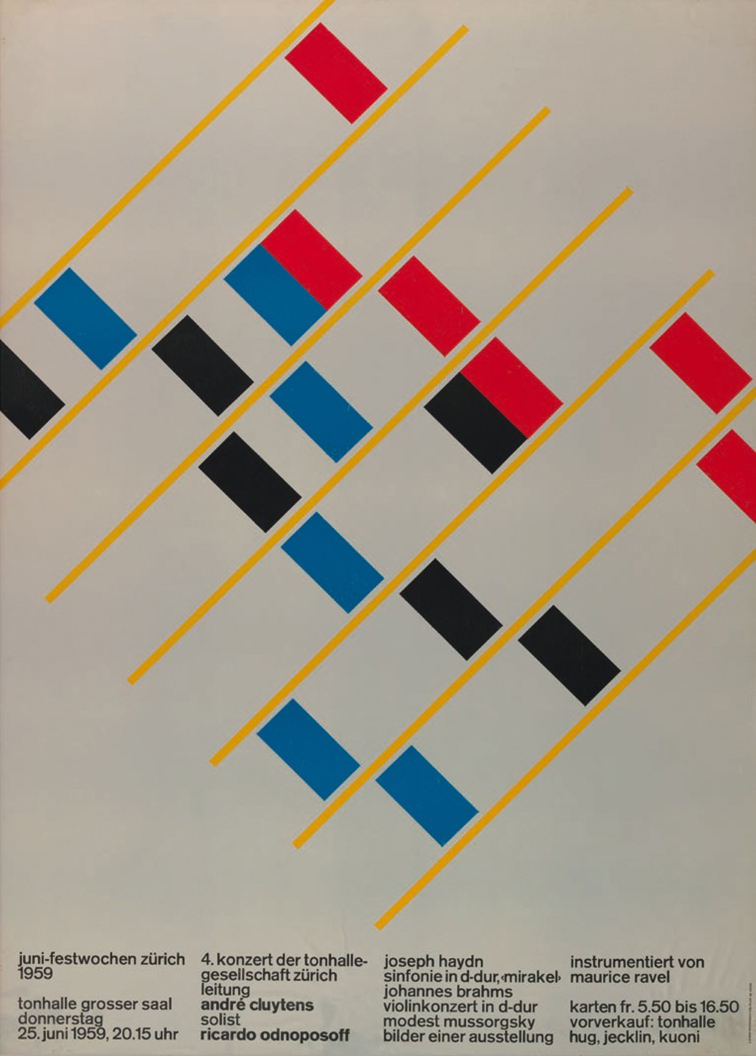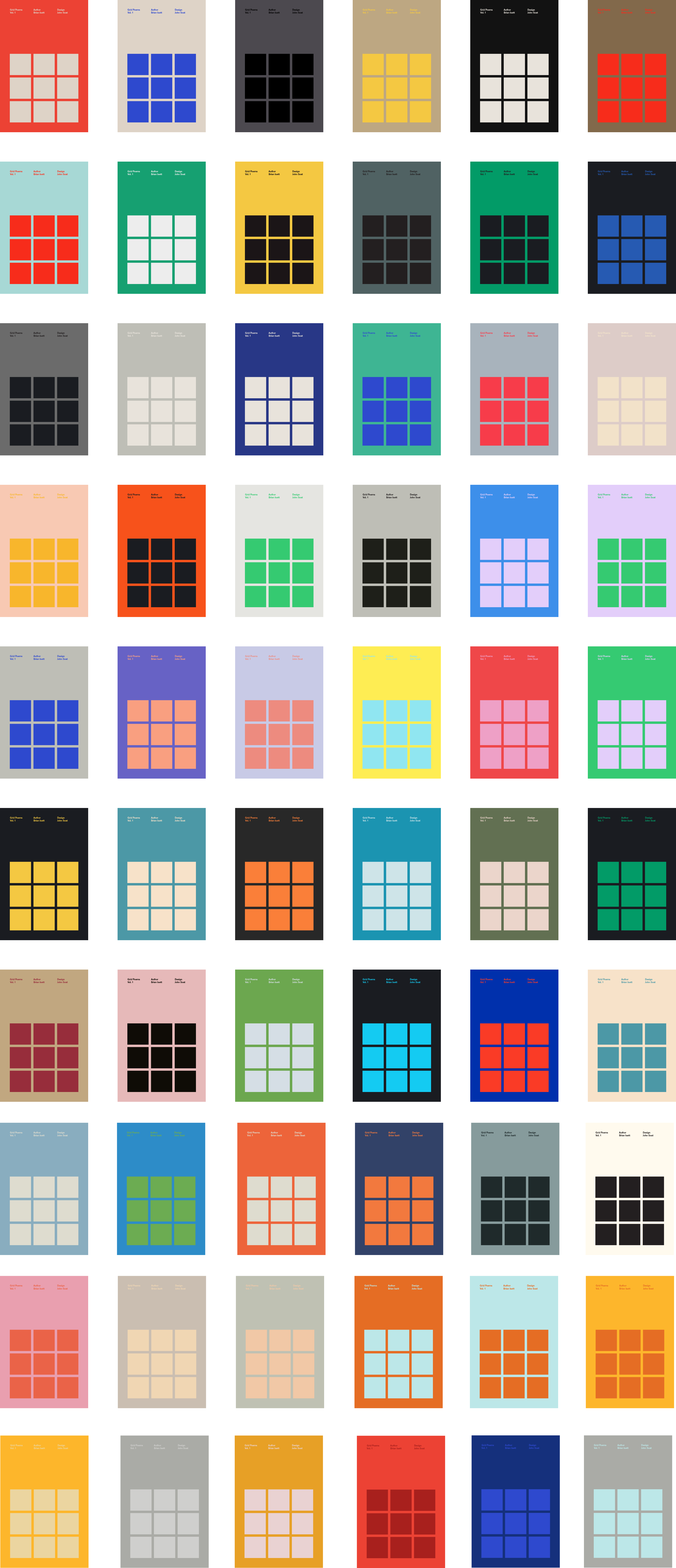Designer / artist John Soat (co-founder of Point in Passing) and myself (Brian Isett) recently completed a collection of 45 illustrated poems: Grid Poems Vol. I. Everything from selecting the paper type, cover cloth, and ink selection, to the design and content of the book were entirely up to us. Collaborating on a DIY project at this scale required a lot of decision-making and new learning that we wanted to share. So we caught up with ourselves with a little self-reflection-style Q & A. BE= Body Electric, BI= Brian Isett, JS = John Soat.
BE: How did this project start?
BI: In 2013, I was taking a neural networks class for my PhD and encountered the phenomenon of “multistable perception,” which I found to be incredibly cool. Some information in the world is so convincing, and yet so ambiguous, that we will actually notice our perception spontaneously switching between two very different interpretations [see example below]. There is something “true” constrained by the alternating perceptions, but that truth is also inaccessible. This idea really resonated with me. I was in a writing group at the time and I started writing poems in the shape of a 3 x 3 grid of lines that could be read both left-to-right and top-to-bottom. Thus, given sufficient grammatical ambiguity, the same text could pivot to allow two perspectives to emerge from the same text.
BE: Basically “The dress” of gold vs. blue fame.
BI: Exactly. It’s obviously blue [laughs]. And also obvioulsy gold.
Does the cylinder turn clockwise or counterclockwise? Ambiguity allows your perception to spontaneously switch how the movements are interpreted.
BE: What did this form allow you to do, poetically?
BI: All experience is open to multiple interpretations, but the grid poems allowed me to experiment with that property explicitly. It allowed me to express and examine the repercussions of interlocking, pivoting subjectivity. For example, these pivots broaden the range of possible identities and experiences each of us can have. But at the same time, the same pivots expose us to miscommunication, disappointment and disillusionment. This trade-off became a common theme throughout the book.
BE: When did you two first decide to collaborate on this project?
JS: Brian and myself had collaborated years ago on a hybrid poetry and design blog, called Selective Synthesis. As most blogs do, they fizzle out in time, but we had a blast doing it and always knew that we shared a collaborative energy and complementary skill set.
Last July, we both attended a wedding in the English countryside and commiserated how we needed to find a path for making work together again. Brian, shared that he had been working on a series, called “Grid Poems” for quite some time. The moment I heard his concept for this form of poetry, I was captivated. As a designer and Josef Müller-Brockmann proselytizer, the grid is sacred. I was immediately inspired by the potential of how this could work in tandem with a visual system.
BI: All true! I sometimes forget about Selective Synthesis but that was definitely the first design/poetry collaboration we had. I had been working on these grid poems for a while and I knew that the form would really benefit from design considerations that were beyond what I could do myself. John was a natural choice of people to approach.
BE: You have very different expertise and live in different states–was it difficult to collaborate?
JS: Working from NY and CA actually proved to be much easier than I expected. When the only thing you are sharing is text docs and pdfs, it’s easy to review and iterate. Throughout the process we provided constant critique, but ultimately because we are working in different mediums, we allowed the other to express themselves how they saw fit. Lengthy emails became second nature to the process. I’m pretty sure I’ve emailed Brian more in the last year than anyone, ever.
BI: Like John said, it proved to be pretty easy. One thing I worried about was whether John would have time to dive deep into the poetry. Not only did he do that, he gave in depth feedback on every single poem that I found incredibly useful. It ended up being much more collaborative and productive than I expected, to great effect.
BE: Why did you decide to design and publish this book yourselves?
BI: We wanted complete creative control over the project in order to bring it into the world exactly how we imagined. I think the design of the book was a huge part. Typical publishers don’t like taking risks and use in-house designers. At the same time, there is a lot of marketing and distribution overhead in any successful project–a publisher is a huge asset for these parts of the equation.
JS: Immediacy. We honestly didn’t even seek out a publisher. From the beginning, we had a pretty clear vision for how we wanted the book to be executed, and did not want to wait on anyone else for approval.
BI: We’ve discussed approaching a publisher if the project seems to warrant a second edition.
BE: Had you ever designed a book before?
JS: Never. Quite a bit of trial and error through the process. Constantly printing out versions on the home inkjet. However, I’m incredibly inspired to do it again.
BI: I actually designed one other book previously: a self-help book that my dad wanted to put out there (“Think Right, Feel Right”). That book was a success, so I think that experience showed me the DIY approach could work. It was also good because technical aspects like a book’s “gutter margin,” were already on my radar. This central margin of the book changes size depending on the type of paper you use and how many pages the book requires, making it a common source of DIY error.
BE: What were some book design considerations you had to make that weren’t on your radar before this project?
JS: Initially, the printing on internal pages were multi-colored, but because of cost restrictions, we limited the book to a single-color black. Ultimately, I think this limitation provided a stronger structure and viewpoint for the entire piece. This distilled everything down to be judged on the purity of its form.
BI: The cover cloth and foil-ink selection were new to me. [The ‘foil’ is the title and design stamped into the cloth of a hardcover book.] John created a ton of cover mock-ups but then it turned out we were pretty constrained to using a subset of cloths that could hold the right amount of ink. We also couldn’t justify the cost of a full mock-up book being made so we didn’t know for sure what it would look like until they shipped us all 150. But I was so happy with how it turned out! We relied heavily on John’s design intuition and Conveyor Edition’s patience and expertise.
BE: John, how did you use the poetic form and content to inspire your visual work in the book?
JS: The gridded form of the poetry determined everything. This defined the book’s grid, as well as the exact structure each illustration needed to live on—becoming probably the most painstaking and annoying set of restrictions I’ve ever imposed on myself during a design project. Early in the process, I was “editor” for the individual poems. This allowed me to really dig into the content and many layers each poem possesses. With that insight, I then began illustrating a complementary visual component. Having the poem side-by-side with the visual, allows the context of the poems to drive much of the perception. Each illustration became a meditation on restraint and creating the most reductive, but expressive element possible. This was not an attempt at extreme minimalism, but rather, reducing a concept to a few simple shapes allows for an array interpretations, much in the same way the poetry does.
BE: Will there be a Grid Poems Vol. II?
JS: I really hope so! The intent going into the project, was to build a system which evolve and grow. At this point, we are looking to distribute and publish Grid Poems Vol. I on a larger scale. If this volume is well received, I feel it would definitely inspire a desire to continue making these books. We are infinitely more well prepared now to create a second volume.
BI: Such an ambitious title, right? If we do, I could imagine it being a complete re-imagination: using a new set of constraints, or switching roles so that I write poetry in response to John’s work… I think there are a lot of cool possibilities. Like John said, if this project is successful, I think we would both be excited to brainstorm what a second project would look like.
BE: Thanks for reading about the project and thanks to John for making this Q & A with me! -BE.





